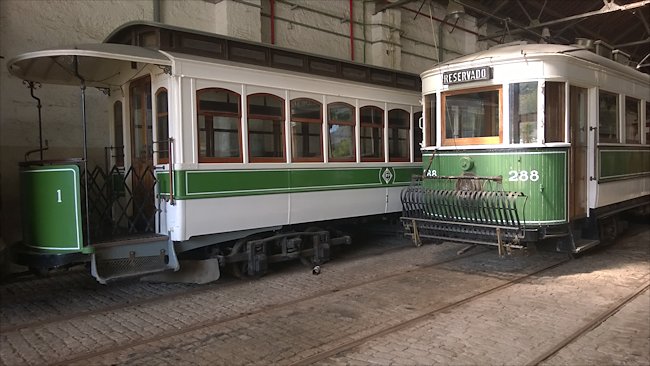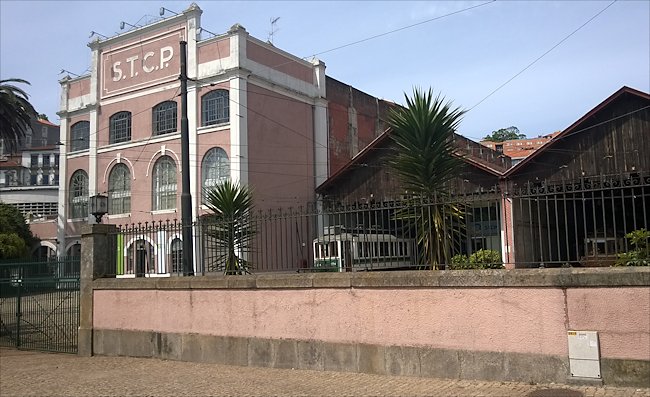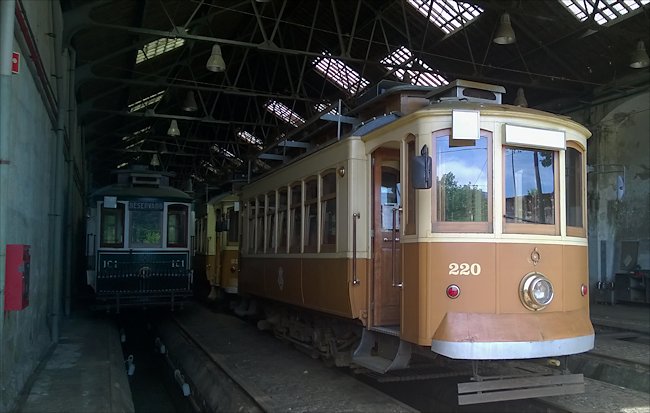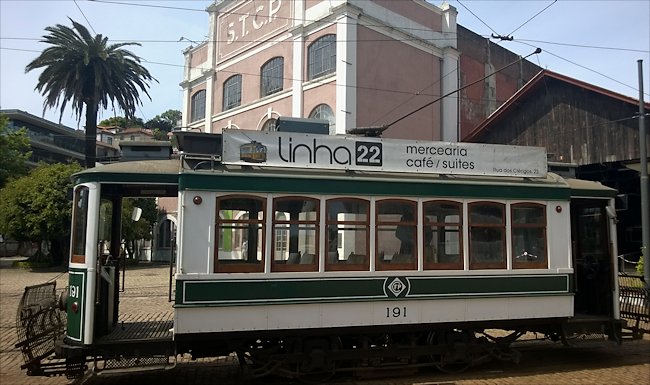Old Tram shed and Museum
There are not many cities around the world that still preserve and run old overhead powered electric tram cars. The most famouse is of course the trams of San Francisco in California, America but the old trams of Porto are just as interesting.

Porto Tram Shed Museum working electric trams
There are only three of the old original tram routes left; the number 22 that serves the city centre, route 18 that is the link between the river and the city centre and the most famous the route 1 that runs along the north bank of the river from the Infante tram stop to the seaside Foz do Douro at the mouth of the river Douro.
You will find the old tram shed museum along a road called Alameda de Basilio Teles. It is on the north side of the River Douro to the west of the city centre. Many tourists take the tram from the city out to the beach along the river. If this is your intention then do not include a stop at the Old Tram Shed Museum, Museu do Carro Electrico, as you will find great difficulty getting back on the tram to continue your journey. Most trams coming out of the city heading for the coast are full. Treat a visit to the Tram shed and a visit to the seaside as two separate trips.

Museu do Carro Electrico building and tram sheds in Porto
Take an old tram to the tram shed and spend time having a look around the building. Check the website to see if it is open first. www.portotramcitytour.pt. A route number 1 or 18 tram will take you to the museum. Even if the Museum is closed and you are limited for time it is still worth visiting the building as you can still see a lot of these old wooden trams in action. All these photographs were taken on a day when the Museum was closed.

Porto's working heritage trams waiting to go on their next trip.
The first tram in Porto was powered by mules. They pulled the wagons along the tracks. It connected the Infante tram stop outside the Church of Saint Francis (Sao Francisco) in the city to the seaside along the northern river bank. This is was to become the tram route number one. It opened in 1872. More routes were opened because of its popularity. In 1895 the line was electrified and the last Mule tram was retired in 1904.
The City council took over the running of the tram system in 1946. Running costs were increasingly becoming more expensive when compared to operating busses. A lot of the old track was dug up. Routes were closed or shortened. In 1958 there were 192 trams running on 81 kilometres of track. In 1996 there were only 16 trams running on just 14 kilometres of track. Busses took over most routes. The system was down graded to a Heritage tram classification. Trams continue to operate but at less frequency. The trams are now a tourist attraction rather than a mass transport system.

One of the working trams outside the Porto Tram museum building
The tram track gauge is 1435mm (4ft 8 1/2 inches) and is powered by a 600 Volt DC current transmitted to the tram via an overhead hook arm that connects with the power cables the run the length of the route. The tram is not dead in Porto. New modern tram systems have been built and are fun to travel as well.
Travel books

